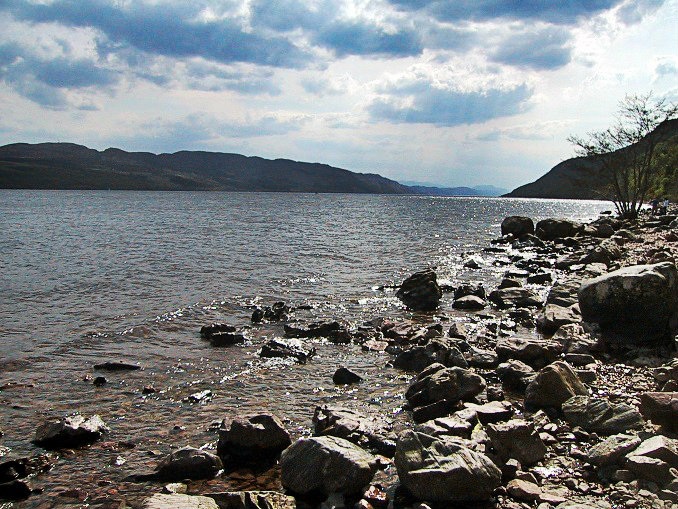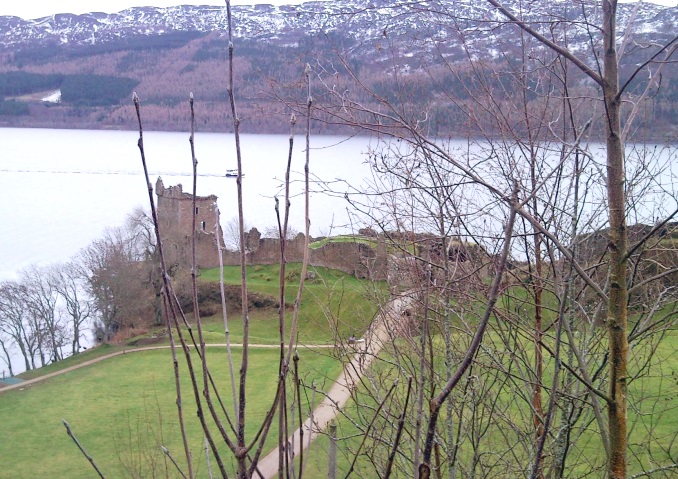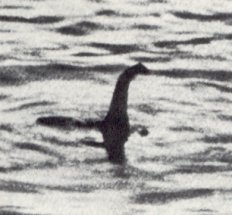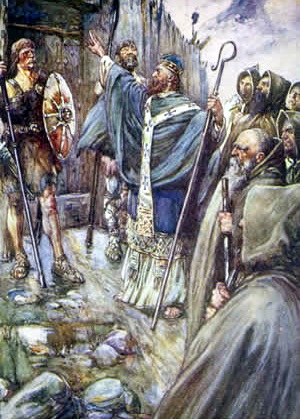Beauty and the Beast - The Legend of the Loch Ness Monster and Beautiful Loch Ness

Loch Ness (Scottish Gaelic: Loch Nis) is a freshwater loch in the Scottish Highlands (Scottish Gaelic: A' Ghàidhealtachd). Renowned for its great beauty the Loch is a maximum of twenty two and a half miles (36.2km) long with a maximum width of just over one and a half miles (2.7km).
The rivers Tarff, Coiltie, Moriston, Farigaig, Enrich, Foyers and Oich along with a number of burns flow into the loch which at its deepest is over 754 feet (230m). It holds about 16 million 430 thousand gallons of water and has just one outlet, the River Ness (Scottish Gaelic: Abhainn Nis), which flows down through the city of Inverness (Scottish Gaelic: Inbhir Nis) in the northeast of Scotland and out into the Moray Firth which is an inlet of the North Sea.

Loch Ness is located in the Great Glen (Scottish Gaelic: An Gleann Mòr). The Great Glen follows the line of a large geographical fault which has been active for some 400 million years. Loch Ness as we know it today dates back to the end of the last Ice Age when the Great Glen was filled by a large glacier. Glaciation in the last Ice Age began 33,000 years ago and reached its height about 22,000 years ago. Powerful ice streams shaped the area of Loch Ness where they carved a deep a glacial trough from the existing valley and formed a deep rock basin on its floor.
Loch Ness is a photographers paradise surrounded as it is by spectacular scenery. When the conditions are right, this is reflected in the waters of the Loch. However, the Loch has many different moods and always seems to offer a new perspective to the thousands who visit throughout the year. Whatever the season or time of day it is difficult to find a more impressive location with astounding views of the hills that overlook it. Whether the waters are stirred by wind, or calm and gentle, sometimes shrouded in a mysterious rolling mist; there is something quite otherworldly about Loch Ness. However, probably the most photographed location on the Loch is Urquhart Castle. It stands on a rocky promontory that juts into the Loch and is one of the most visited of Scotland’s castles. Now it stands as a magnificent ruin with the Loch as its backdrop. On warm still summers days this beautifully haunting building is the very picture of peace and tranquility with the blue waters of the Loch lapping at its feet. But the history of Urquhart Castle is anything but peaceful and is the site of considerable conflict and has witnessed many battles.

Urquhart Castle was built from the 13th to 16th centuries. In 1296 it was captured by Edward I of England. Afterwards it changed hands between Scottish and English forces. In 1332, following the death of King Robert Bruce (11 July 1274 – 7 June 1329), Urquhart Castle was the only Highland castle that held out against the English. However, once the English had gone the castle remained the scene of conflict, this time between the Crown and the MacDonalds, Lords of the Isles. The fortress was much fought over until the time of the final MacDonald raid in 1545. The castle finally fell into decay after it was blown up by government forces in 1692 after they had garrisoned it during the Jacobite rebellion. The promontory on which the building stood, however, was an important location even before the building of Urquhart Castle and a piece of a Pictish brooch dating from the late 8th or early 9th century has been found there. It is thought to be the site where the Pictish nobleman, Emchath, lived and was baptised by St Columba in about 580 AD. At the time St Columba was journeying in the lands of the Picts having travelled from his monastery in Iona to the court of the King of the Picts, Bridei. St Columba features in another story involving a famous, if rather elusive resident of Loch Ness - Nessie.

Loch Ness is famous for being home to the mysterious large aquatic animal known as the Loch Ness Monster or affectionately known by the nickname Nessie (Scottish Gaelic:Niseag). There is no clear evidence of its existence, although sightings persist. The few photographs said to be of the creature are very controversial and they, along with some sonar readings, are disputed. Over many years people have claimed to have seen Nessie in the Loch and their descriptions have led to speculation that, if it exists, it could be related to the plesiosaurs. Plesiosaurs first appeared about 205 million years ago but have been extinct for some 66 million years. They were found throughout the world’s ocean, had a broad flat body a short tail and four long powerful flippers. Plesiosaurs are thought by some to have been warm-blooded, breathed air and bore live young.
Despite all attempts to dismiss tales of a monster in Loch Ness there appears to be no end to claimed sightings of Nessie. Over the years there have undoubtedly been hoaxes; some more skilled and convincing than others. However, amongst these there are many accounts that have come from those witnesses who are not seeking to fool anyone. Often they talk of being surprised by movements in the water of a seemingly large creature just below the surface. Unexplained dark shapes, occasionally just breaking the Loch’s surface to reveal glimpses of something so strange and inexplicable that it leaves many to think that they have indeed seen something of the elusive Loch Ness Monster. With the building of a road alongside the Loch in 1933 there were more claimed sightings of Nessie. Indeed 1933 brought considerable attention to the possibility of something strange living in its depths. The Inverness Courier published an article on 2 may 1933 by Alex Campbell, a Lochness Water Bailiff, about a sightings of "a beast" in Loch Ness by locals. This was followed on 22 July 1933, when visitors from London, George Spicer and his wife, said that they had seen a strange animal crossing the road and entering the Loch. In August of the same year a motorcyclist said he was forced to crash after trying to avoid a similar such animal.

This all inspired more interest and further claimed sightings in the following years, including some much debated photographs. Many Nessie enthusiasts have pointed to earlier examples of a creature being mentioned in the vicinity of Loch Ness. The first one dating back to a passage in the seventh century "The Life of St Columba" written by Adomnán of Iona. He was Abbot of Iona between 679–704 AD. Iona (Scottish Gaelic: Ì Chaluim Chille) is an island in the Inner Hebrides (Scottish Gaelic: Na h-Eileanan a-staigh) off the west coast of the Scottish mainland. It is the site of a monastery founded by the Irish monk Columba in 563 AD. He was the great-great-grandson of Niall Noígíallach, Irish high king who reigned in the late 4th and early 5 centuries, and ancestor of the Uí Néill family who were dominant in Ireland from the 6th to the 10th century. Saint Columba is credited with spreading Christianity in Scotland. In Adomnán’s account of St Columba’s life which was written some 100 after his death, Columba came across a group of people burying a man by the River Ness during his journey through the lands of the Picts. Columba was told that the man had been attacked by a “water beast” which had dragged him under the water. In this story Columba sent his follower Luigne moccu Min to swim across the river. When the beast came after him, Columba made the sign of the cross and ordered the beast to leave and the poor old monster fled.
Of course there are many creatures in the mythical legends from all of the Celtic lands. A number are associated with lakes, lochs, rivers, waterfalls and the sea. A number are mentioned in “Celtic Myths and Legends” by Peter Berresford Ellis. Probably one of the best known of water dwelling creatures in Scottish folklore is the Kelpie, a shapeshifter that takes the form of a horse. Horses often feature heavily in Celtic mythology as do birds and other creatures. Nature and respect for the natural world are pivotal in Celtic culture and history. This respect translates to present concerns for the protection of the environment. The beauty of the Highlands of Scotland and Loch Ness are a reminder, if any was needed, of the need to safeguard the wonders of this planet of ours. Maybe, just maybe, there is another wonder waiting to be discovered in the world. That wonder is Nessie, the Loch Ness Monster. Certainly the reported sightings of this creature continue and those who have witnessed a large aquatic animal emerging from the depths of the Loch are convinced that they have indeed seen the Loch Ness Monster. As for me? I would love Nessie to exist and the world would be a more interesting place with such a great creature in it. Would it be a waste of time to go to Loch Ness in the hope of an encounter? How could it it ever be a waste of time to visit Scotland and include in your visit beautiful Loch Ness. You never know what you might see, so keep your camera handy! Air do shlàinte Niseag!
Content type:
- Scottish
Language:
- English
- Log in to post comments





